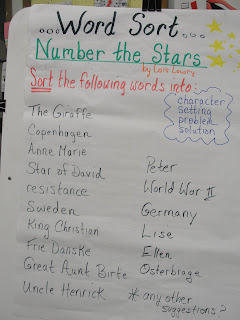The appendix to the Common Core has an interesting list of books you could use to teach the new standards. I really liked this nonfiction pick:
Toys! Amazing Stories Behind Some Great Inventions. by Don Wulffson. I used Youtube videos to introduce a few of the the different inventions: the slinky, magic rocks, and Mr. Potato Head. These are posted at the bottom. After reading each individual story I had the students work on this worksheet I created:
They had to record the name of the invention, the inventor, when and where they invented it, what
inspired him/her, and a
problem the inventor encountered. The last block was a place to record a trait or characteristic we noticed that the inventor had. For example: creative, hardworking, intelligent.
Most of the stories in the book
Toys! follow this pattern. Later on in the week we worked in groups to prove that inventors have
common characteristics.
I used those large stickers to have the groups record text based evidence of inventors showing that they were smart, persistent, creative or hardworking. The kids really liked this book. The stories are short. You could read 2-3 in a period. They could also be easily summarized.
- RI.4.1. Refer to details and examples in a text when explaining what the text says explicitly and when drawing inferences from the text. (We had to infer common traits of inventors)
- RI.4.2. Determine the main idea of a text and explain how it is supported by key details; summarize the text.
- RI.4.3. Explain events, procedures, ideas, or concepts in a historical, scientific, or technical text, including what happened and why, based on specific information in the text
RI.4.7. Interpret information presented visually, orally, or quantitatively (e.g., in charts, graphs, diagrams, time lines, animations, or interactive elements on Web pages) and explain how the information contributes to an understanding of the text in which it appears. ( Some of the info from the Youtube video on the invention of the slinky conflicted and/or added to the information we learned from the text)
RI.4.10. By the end of year, read and comprehend informational texts, including history/social studies, science, and technical texts, in the grades 4–5 text complexity band proficiently, with scaffolding as needed at the high end of the range.











